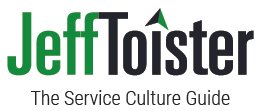Are your employees maximizing their potential?
Most of us are trying to improve employee performance at some level. Individual contributors try to do their jobs better. Leaders try to elevate their teams. Executives try to guide their entire organizations towards success.
Most of us go about it the wrong way.
The wrong approach is an impatient one. It starts and ends with solutions. We spot a problem, swiftly generate ideas to solve it, and then quickly move on to the next thing.
The challenge here is the problems never seem to go away. They keep happening over and over again. Or worse, the solution generates a new set of unanticipated problems. Nothing truly gets better.
How many idea-generating discussions have you been a part of in the past month? Now, count how many discussions you’ve had during the same time to talk about the results that were achieved.
For most of us, the ratio of ideas to results is disconcerting.
This post is about the right way to improve performance. It’s a proven methodology that works time and time again so long as you have the discipline to follow it.
Step 1: Clearly define the desired performance
You can’t deliberately improve performance if you can’t describe what success looks like.
This is a huge problem in my field, customer service. A whopping 38 percent of companies have no definition of what outstanding service looks like. Even among the companies that have taken the time to define outstanding service, the number of employees who are actually familiar with the definition is often quite low.
How can we get better at something if we don’t know what “better” is?!
This isn’t just a customer service issue. The same holds true for many aspects of workplace performance. There’s an alarming lack of clarity around what we really mean when we discuss hot topics such as teamwork, employee engagement, and leadership.
One of my favorite performance improvement questions is “What does success look like?”
You need to have a clear answer to this question if you want to improve performance. Better yet, find a way to put numbers to it and make it measurable. You’re welcome to use my SMART goal worksheet to help you out. (They don’t call ‘em SMART goals for nothing!)
Having a SMART goal can change the conversation from a very wishy-washy, “We want to get better at customer service” to a much clearer “We want to achieve an 85 percent rating on the December customer satisfaction survey.”
Step 2: Identify current performance
Where are we right now? Surprisingly, a lot of people struggle with this question.
Current performance isn’t documented, measured, or clearly articulated. We just know we want to do better.
Can you imagine using your car’s GPS system or your smart phone’s navigation feature if it couldn’t find your current location? Any direction it sent you would essentially be random.
That’s often how people try to improve performance. They stick to generic solutions that may or may not be appropriate.
Often, that generic solution involves some form of cookie-cutter training.
I’m a big fan of training. I absolutely love it. I’m certified in it. My company has been recognized as a Champion of Learning by the American Society for Training and Development for four consecutive years. My customer service training program is really, really good.
And, as much as I love training, I hate to waste it.
So, before you jump to a generic solution, try to pin down current performance.
- If you want to improve productivity, what’s your productivity now?
- If you want to improve service, what do your customers say now?
- If you want to employees to be more engaged, how engaged are they now?
Step 3: Analyze the gap
If you are at A, and you want to be at B, what's holding you back?
This is an amazingly clarifying question. Sometimes, the answer is related to knowledge or skills which can be fixed with training. In other cases, there’s something else that’s getting in the way.
If you want to find the obstacles inhibiting performance, try taking a walk. In Lean, it’s called “Gemba” or “go and see.” It involves observing the performance to look for obvious barriers to success.
I recently had a client who wanted to improve the sales closing rate in their inbound call center. It was 33 percent and the client wanted to raise the bar to 40 percent. My client initially asked me to conduct some training, but after spending five minutes in their call center a new solution quickly emerged.
The call center reps received their highest volume of calls in the morning. They didn’t have enough staff to handle the volume, so customers sometimes had to hold for as long as 30 minutes. This made the reps anxious to quickly get through each call so customers weren’t kept waiting.
The simplest solution was adding staff to help their peak volume. Within 30 days of changing their staffing levels, the closing ratio was up to 45 percent. The additional sales more than made up for the cost of hiring more people.
It ain’t always easy
I’m a big fan of quick wins. It makes me look like a genius when I can spend five minutes with a client and show them how to increase their closing ratio from 33 percent to 45 percent. If only it were that easy.
Believe me, results may vary.
Most of my clients are really good at what they do already. They're trying to take things to the next level, which means the solutions are usually a bit less obvious.
There is one constant. I start with the same three steps whenever I help a client improve employee performance. You can do the same thing now that you know these steps too.














